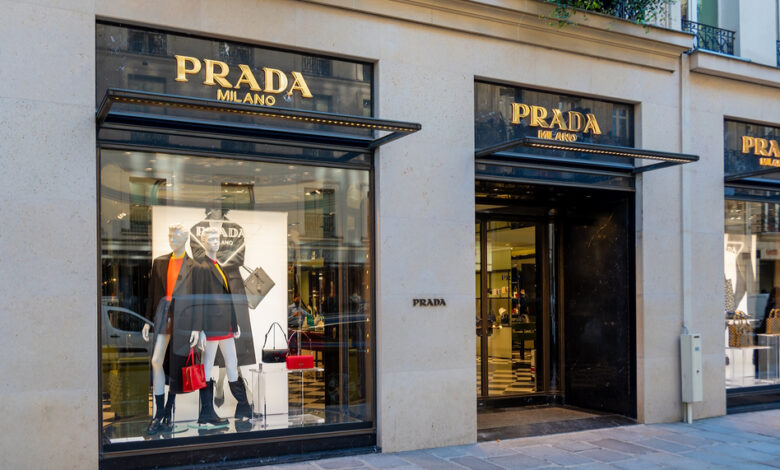Prada’s Evolution: Strategic Mastery in Luxury Fashion

Prada’s Evolution: Strategic Mastery in Luxury Fashion. Prada’s ascent from a modest Milanese leather goods shop to a global luxury powerhouse is a narrative rich with strategic innovation, resilience, and an unwavering commitment to authenticity. This journey offers entrepreneurs a blueprint for building a brand that not only endures but thrives amidst evolving market dynamics.
Foundations in Craftsmanship
Established in 1913 by brothers Mario and Martino Prada, “Fratelli Prada” began as a purveyor of fine leather goods in Milan’s Galleria Vittorio Emanuele II. The brand quickly gained a reputation for exceptional craftsmanship and quality. However, it was under the stewardship of Mario’s granddaughter, Miuccia Prada, that the brand began its transformation into a symbol of modern luxury.

Strategic Leadership and Expansion
In the late 1970s, Miuccia Prada took the helm, steering the company with a vision that blended respect for heritage with a flair for innovation. Recognizing the potential for growth, she introduced a line of black nylon backpacks and totes in the 1980s, which became unexpected hits and set the tone for Prada’s minimalist aesthetic. This move challenged conventional luxury norms and positioned Prada as a forward-thinking brand.
The 1990s marked a period of aggressive expansion. The launch of Miu Miu in 1993, a subsidiary brand offering a more youthful and experimental line, allowed Prada to capture a broader market segment. Simultaneously, acquisitions of brands like Jil Sander and Helmut Lang signaled Prada’s intent to diversify and solidify its presence in the luxury market.
Innovative Marketing and Cultural Engagement
Prada’s marketing strategies have been pivotal in maintaining its relevance. The “Iconoclasts” campaign in 2009 invited influential fashion editors to redesign Prada store interiors, merging fashion with art and creating immersive brand experiences. In 2017, the “Prada 365” initiative shifted the brand’s advertising approach to a continuous narrative, leveraging multiple perspectives and storytelling techniques to engage a diverse audience.
Beyond traditional marketing, Prada’s establishment of Fondazione Prada, a cultural institution supporting contemporary art and culture, underscored the brand’s commitment to intellectual engagement and positioned it as a thought leader beyond fashion.

Embracing Sustainability
In response to growing environmental concerns, Prada launched the Re-Nylon collection in 2019, reimagining its iconic nylon products using regenerated materials sourced from ocean plastics and textile waste. This initiative not only showcased Prada’s dedication to sustainability but also resonated with environmentally conscious consumers, reinforcing the brand’s innovative spirit.
Resilience Amidst Market Challenges
Despite fluctuations in the luxury market, Prada has demonstrated remarkable resilience. In 2024, the Prada Group reported a 17% increase in revenues, reaching €5.4 billion, defying the industry’s downward trend. This success is attributed to a focus on innovation, quality, and a keen understanding of contemporary trends. Notably, Miu Miu’s sales nearly doubled, highlighting the effectiveness of Prada’s brand diversification strategy.

Lessons for Entrepreneurs
- Innovate Within Tradition: Balancing heritage with innovation can differentiate a brand. Prada’s introduction of minimalist designs within a traditional framework attracted a new generation of consumers.
- Diversify Strategically: Launching Miu Miu allowed Prada to appeal to a different demographic without diluting its core brand, illustrating the importance of targeted diversification.
- Engage Culturally: Investing in cultural initiatives like Fondazione Prada enhanced brand prestige and demonstrated a commitment to broader societal contributions.
- Commit to Sustainability: Proactive environmental initiatives, such as the Re-Nylon collection, can strengthen brand reputation and align with consumer values.
- Adapt and Thrive: Prada’s ability to navigate market challenges through continuous innovation and quality focus underscores the importance of adaptability in sustaining growth.
Prada’s journey exemplifies how authenticity, strategic marketing, and resilience can propel a brand to global prominence. For entrepreneurs, it serves as a testament to the power of balancing tradition with innovation and the importance of staying attuned to cultural and market shifts.


